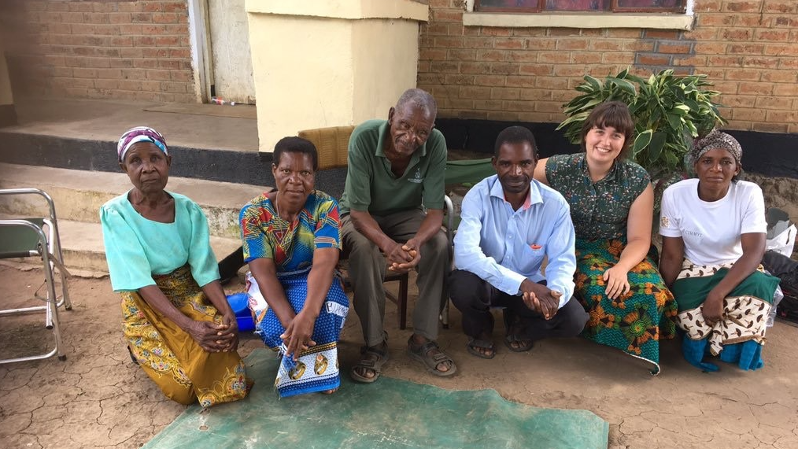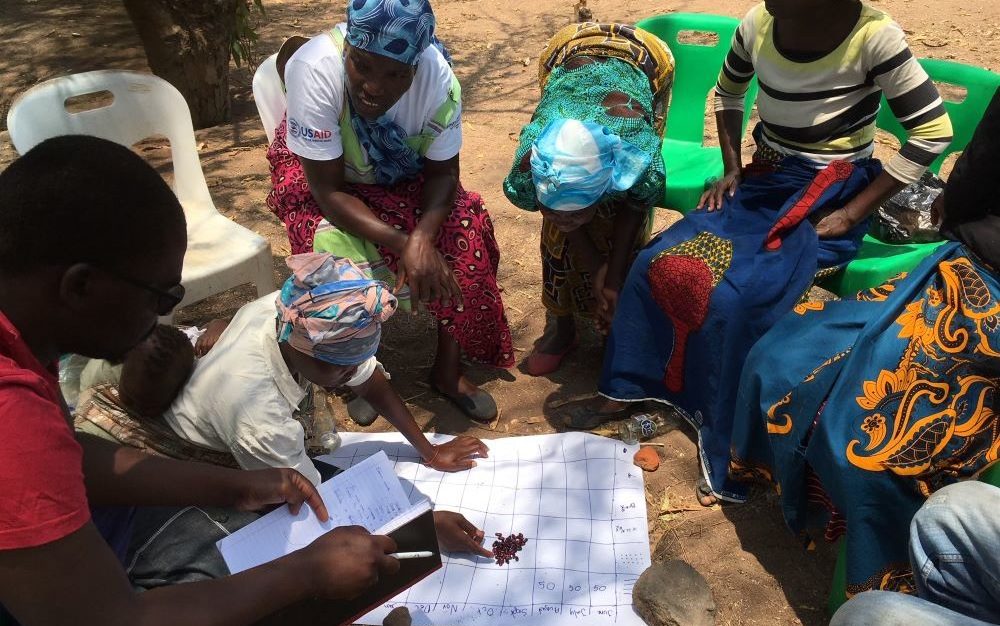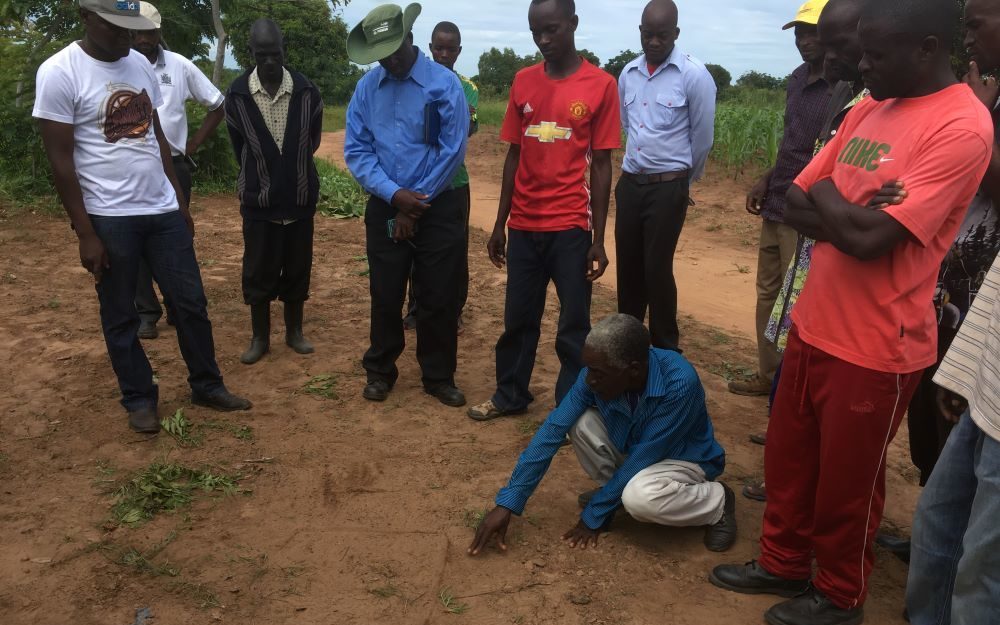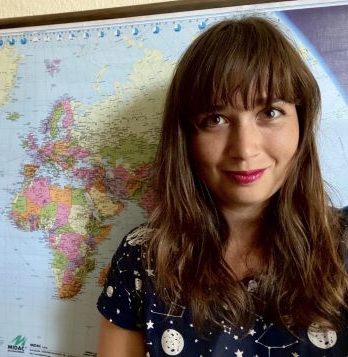By Thirze Hermans, PhD Researcher in Conservation Agriculture, University of Leeds
Challenges of land degradation, climate change and food security have led to the development and promotion of sustainable agricultural practices. As part of this effort practices such as conservation agriculture (CA) are often promoted as solution packages that can be rolled out in a wide range of settings.
Agricultural innovation packages, such as conservation agriculture, are however usually developed by research communities and then simply disseminated for farmers to use. Success is predominantly measured by the number of farmers who adopt them. While measuring success in this way provides some insight, it falls short of telling the whole story.

In a recent study, we found that approaches to the question to ‘what forms of Conservation Agriculture work, where, and why?’, are mainly based on either solely agro-ecological studies or socio-economic studies. Definitions of ‘success’ vary between scientific disciplines, and they fail to represent the multifaceted farm systems and local experience.
Instead, we need to understand how agricultural innovation develops within farm systems. Accomplishing this requires redefining what innovation looks like and how we measure success of agricultural innovations.
This blog outlines our published work with Malawian farmers to understand how promoting an agricultural innovation, namely conservation agriculture, actually plays out within the farming system, and in particular, how decision-making and adaptation takes place.
1. Walking the blurred line of ‘adoption’
Working with Malawian farmers, it was apparent that measuring implementation wasn’t as clear cut as “adopted” and “not adopted”. There was often a mix of old agricultural practices (annual ridges and removal of residues) combined with promoted practices, such as no ridges and residue retention. This mix resulted in ridges with burying residues or planting on old ridges.

Other adaptations happen on different temporal and spatial scales. One farmer changed practices due to rainfall predictions: ridges for heavy rain and CA for dry conditions, preventing long-term benefits assigned to reduced tillage. Some liked to split up the fields for both practices to reduce risks, or in one case, the farmer moved his 0.1 ha of CA around the field suggesting all land could benefit.
Many in the agricultural research world find the adaptation of practices not positive (e.g. moving 0.1ha of CA around means benefits do not last). However, this can help understanding what works and what does not within the farming reality. These experiences show that technical packages cannot just be transferred without local adaptation.
2. People aren’t always rational: Social dynamics
There are many reasons for the variety of ways farmers use the promoted practices, including the role of social dynamics such as social opinions, beliefs and pressure.
One example which particularly stuck out to me was Violet’s* story. She takes care of nine people in her household and has various jobs working in other people’s fields, roadside development, and she rents out land – all while also working on her own field. As quoted from her interview in the paper:
“On the fields where the children helped her, they made new ridges, because her children oppose to not making new ridges despite her own observation that maize does better when planted on old ridges. In 2008, she did [..] CA on 1 acre, but she felt intimidated by others. People were laughing that the plants were so close to each other and will not do well. Now, she still kept the 0.1 ha because the yield was good. The others still disparaged but 0.1 ha was acceptable by them as a test. She says that most of them think that the trial farmers do CA only because they get support and are the extension officer’s farmers.”

This example shows that social acceptance and cultural values play an important role in decision-making. Being perceived as ‘hard-working’ is considered a necessary characteristic for farmers to be food secure – though the recommended CA practice of not making ridges remains associated with ‘laziness’. Another shared belief was the negative impact of residues on groundnut, another value that directly counteracts the introduction of CA.
3. The importance of circumstance: Individual costs, benefits and experiences
The individual situations and experiences of farmers also play a crucial role in the diversity of applications of agricultural practices.
Mary* was one of the farmers who was very excited to talk about her 3-year agricultural system, as noted in the following quote from an interview I held with her:
“She wants to minimize the labour due to her and her husband’s poor health. The first year is the most work when new ridges are made including the burying of residues. In the next 2 years, she leaves the ridges without splitting them to make new ridges and places the residues between them. For these 2 years of no-tillage, she also does not need to spend money on hiring labour. The old ridges are also good for her land because the strong old ridges will not wash away easily on the slope.”
In this experience, health, labour and land conditions are main reasons to implement this 3-year agricultural system. For other farmers, different priorities or experience determine the implementation: rented land discourages soil improving practices due to time lag, but practices like burying residue in ridges are easily adopted because of the low cost.

Costs also include the avoidance of risks, which is important for smallholder farmers. Certain choices are made because they leave options open. For example, one farmer used the conventional ridge making without residues, because a hoe can be used for banking and weeding in case no herbicides can be bought or the weeds still get through the residues. This proved useful since there were unexpected expenses due to illness.
What counts in the end is that the benefits are worth the costs, a balance that differs for each household.
4. Moving forward and measuring success
Agricultural innovation is more than just a technical package – it’s not just about getting the science right or wrong, but requires interacting with local context and experience. Doing this successfully means redefining innovation and ‘success’.
Diversity in implementation shows that the interaction with new agricultural innovations is larger than can be measured by simply counting adoption. Instead of focussing on perfecting promoted technologies which are tied to various organisations, we need to pay attention to the end goal of supporting farmers in building climate resilient agricultural systems and livelihoods. By understanding the local context and dynamic learning processes, including feedback and reflection, we can contribute to more effective strategies to build resilience and food security.
Webinar on 23 Feb
This research was presented at ‘Improving soil health through climate-smart agriculture’, a free webinar from the GCRF-AFRICAP seminar series. Read the webinar recap and Q&A, watch the recording, or download presenter slides.
Paper information
Hermans T. D. G., Whitfield S., Dougill A. J., Thierfelder C. 2020. Why we should rethink ‘adoption’ in agricultural innovation: Empirical insights from Malawi. Land Degradation and Development 1–12. https://doi.org/10.1002/ldr.3833
About the Author

Thirze Hermans is a NERC-funded PhD researcher at the University of Leeds working on Conservation Agriculture scaling in Malawi in collaboration with International Maize and Wheat Improvement Center (CIMMYT). Her PhD research focuses on the Conservation Agriculture scaling process and associated smallholder farmer decision-making, thereby gaining understanding on the processes of change, knowledge interactions and translation from research to communities. She has a BSc in liberal arts and sciences (major environmental science) from Amsterdam University College, The Netherlands, and MSc Physical Geography and Ecosystem Dynamics from Lund University, Sweden. Other projects she is working on include UK climate change risk assessment (CCRA) international dimensions chapter and Red Cross project on the integration of local knowledge on early warning early action with scientific forecasting; case studies for Ethiopia, Kenya and Uganda.
